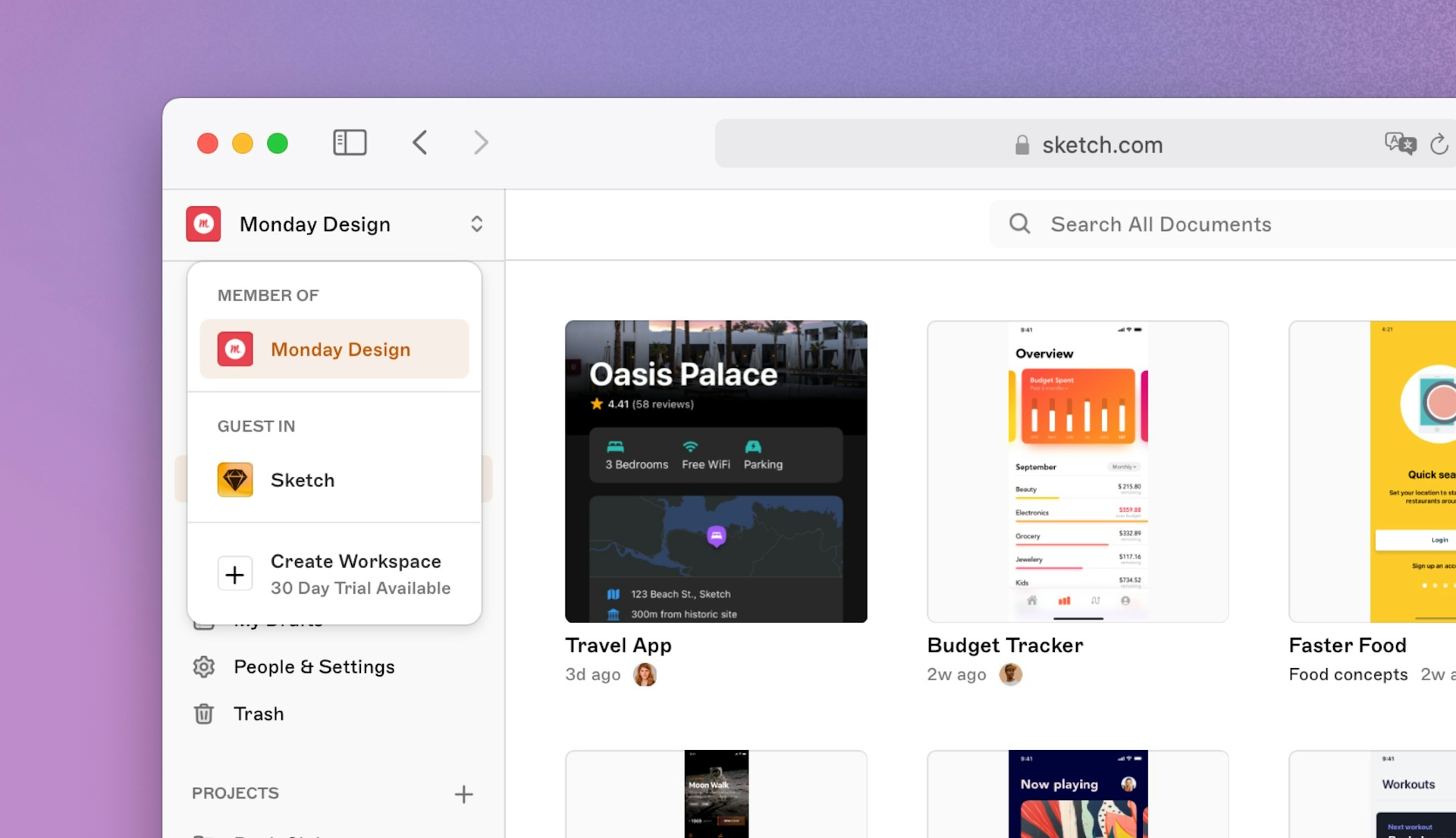If you’re part of two or more Workspaces, you can easily switch between them in just a couple of clicks.
Switching between Workspaces
In the web app, click on the Workspace logo in the sidebar and select another Workspace from the list.
You can switch Workspaces from the Mac app too: use the drop-down menu in the top-left of the Workspace window and choose another Workspace, or toggle between Workspaces using ⌘1 (or the number that corresponds to your Workspace).

The Workspace switcher in the web app
If you’re an Admin and Editor across multiple Workspaces, you can also move documents between them.